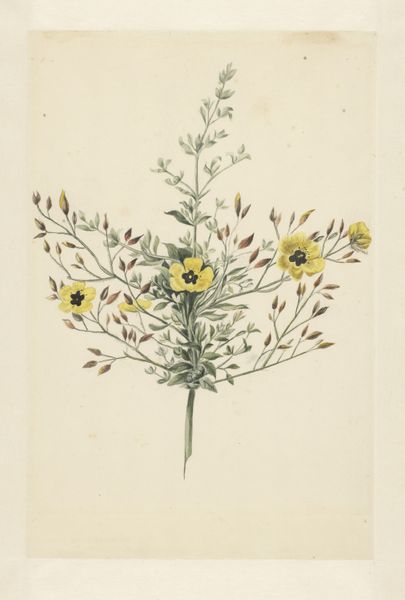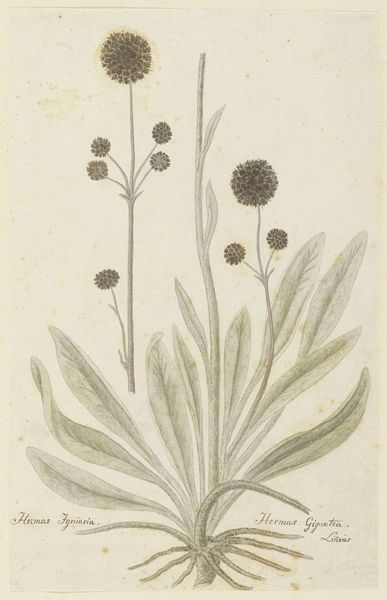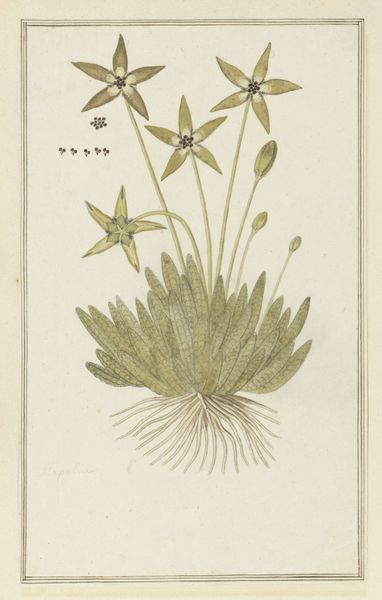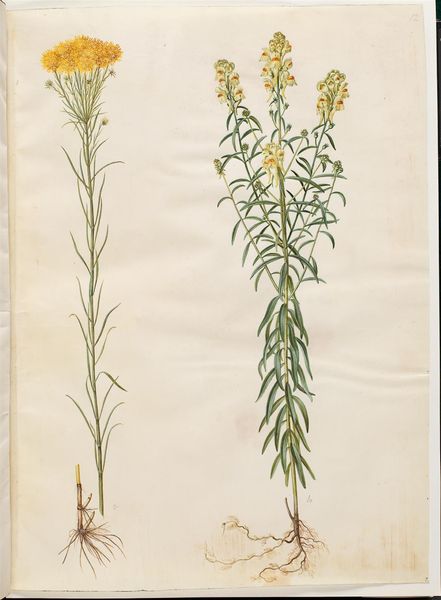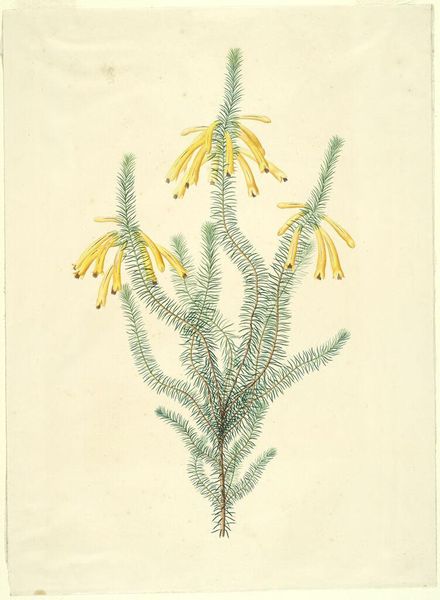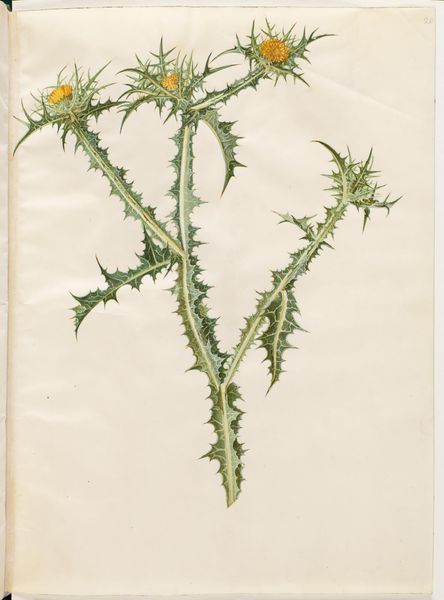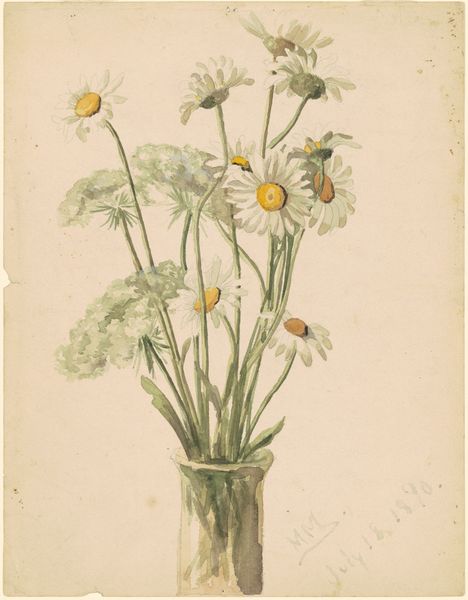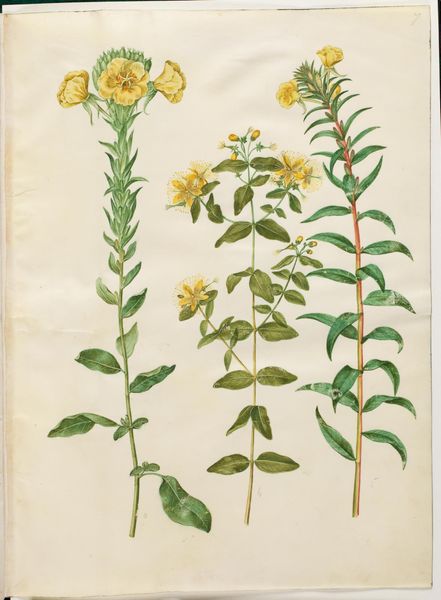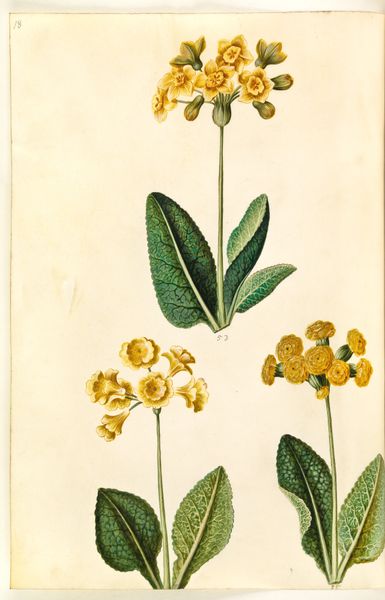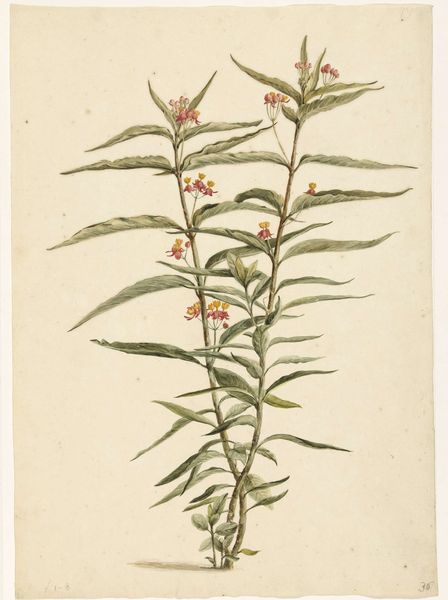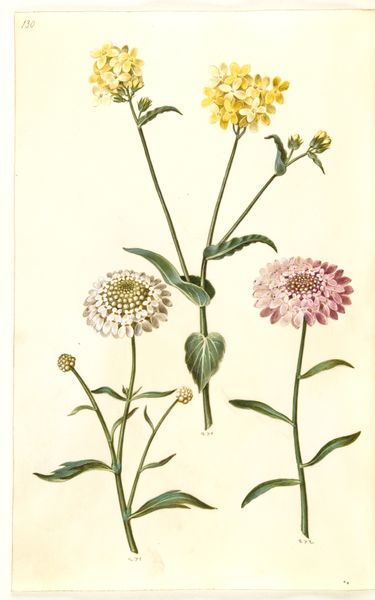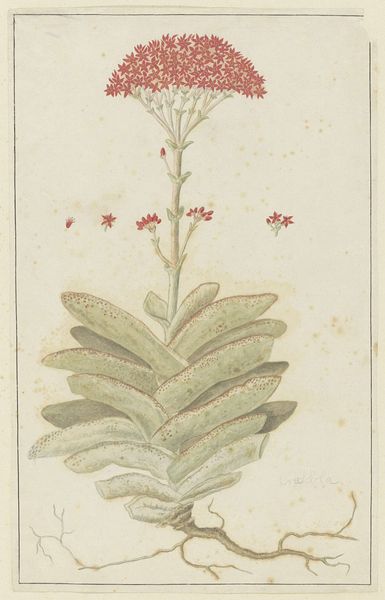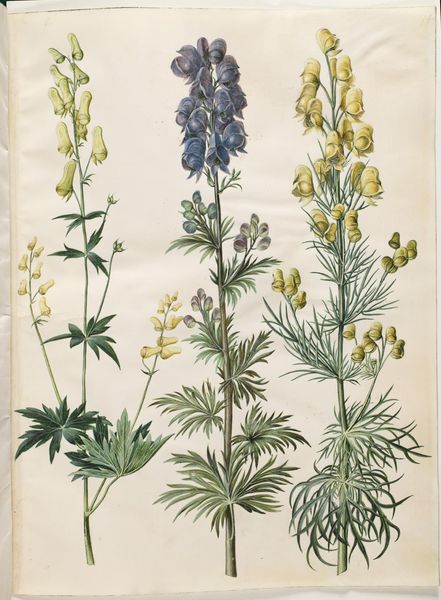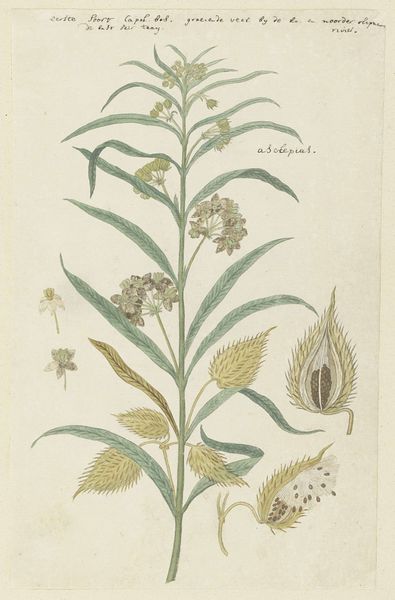
drawing, print, plein-air, watercolor, ink
#
drawing
# print
#
plein-air
#
landscape
#
watercolor
#
ink
#
botanical drawing
#
watercolour illustration
#
botanical art
#
watercolor
Dimensions: 13 1/4 x 8 1/2 in. (33.66 x 21.59 cm) (plate)
Copyright: Public Domain
Curator: Here we have a botanical illustration from the mid-18th century. It's titled "Achillea" and was crafted between 1755 and 1760 by Philip Miller. The artwork combines ink and watercolor. Editor: It’s quite lovely, actually. The rendering is so precise, almost scientific in its detail, but there’s also a certain grace in how the yellow flowers are poised above those almost fern-like leaves. The color is so fresh and bright! Curator: Precisely! This work, housed at the Minneapolis Institute of Art, highlights the increasing interest in botanical accuracy that developed throughout the Enlightenment. Philip Miller was especially interested in plant morphology and was highly acclaimed in his time. Editor: Morphology, huh? It’s funny because I’m thinking about the production of this image. Those delicate watercolor washes belie the labor and expertise involved in both growing the subject matter – this Achillea plant – and then the process of capturing its likeness in ink and paint. What sort of paper would they have been using at this time? What sources did Miller tap? Curator: Excellent questions! Miller's meticulous depictions catered to both scientific study and aristocratic aesthetics. Botanical illustration flourished as global trade introduced new plant species and increased consumption demanded new modes of recording, categorizing and controlling these species, shaping natural knowledge and networks across European society. Editor: Networks is the key. I can't help but think about all that goes into this work--the material sourcing of the pigment, brushes, and paper. Its worth considering how art intersects with emerging supply chains and early science. Curator: You bring up fascinating points! This image really provides a portal into the art and scientific pursuits during the enlightenment. Editor: Absolutely, It gives us so much food for thought, looking at this humble-seeming flower and pondering the wider connections and implications in that time.
Comments
No comments
Be the first to comment and join the conversation on the ultimate creative platform.
